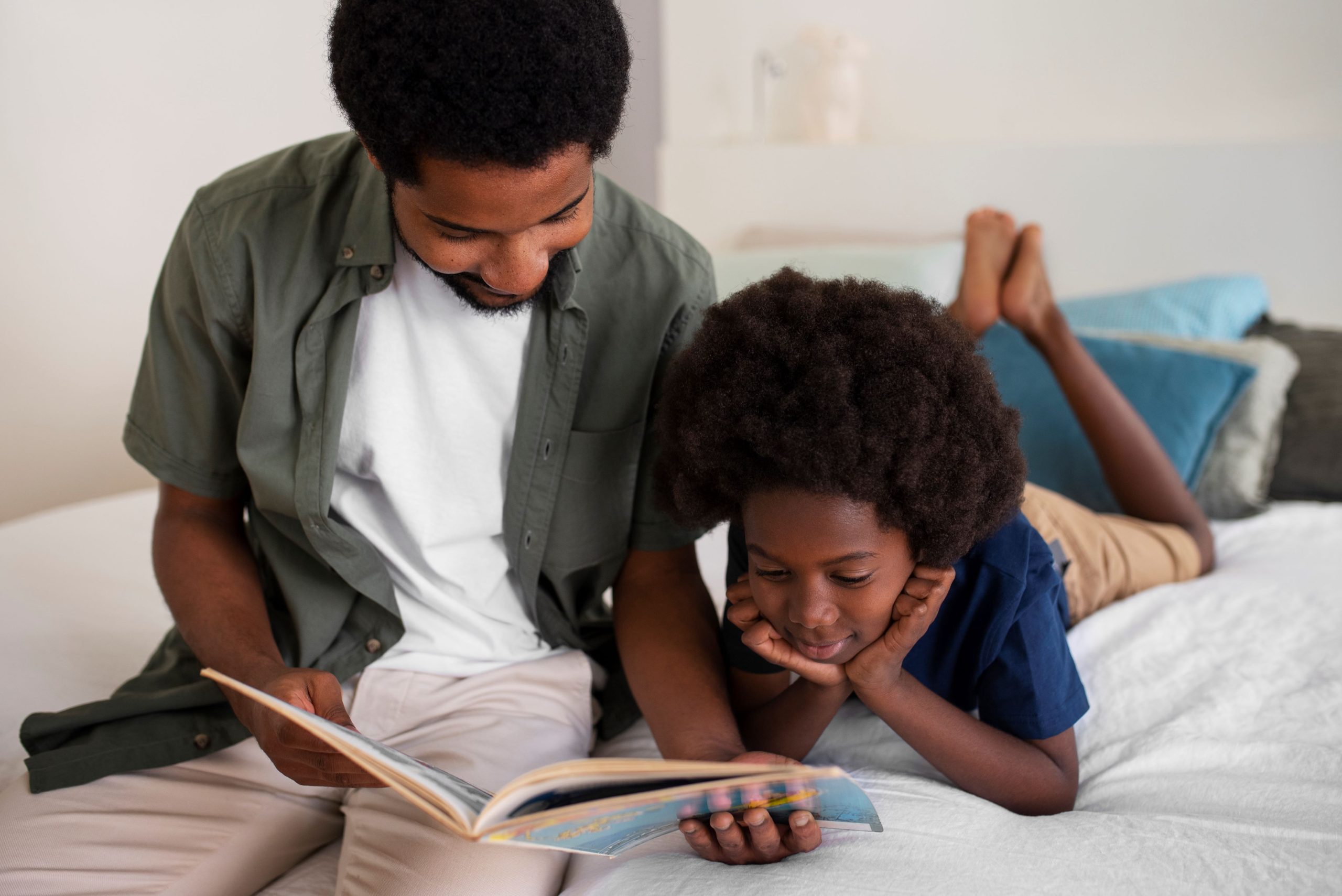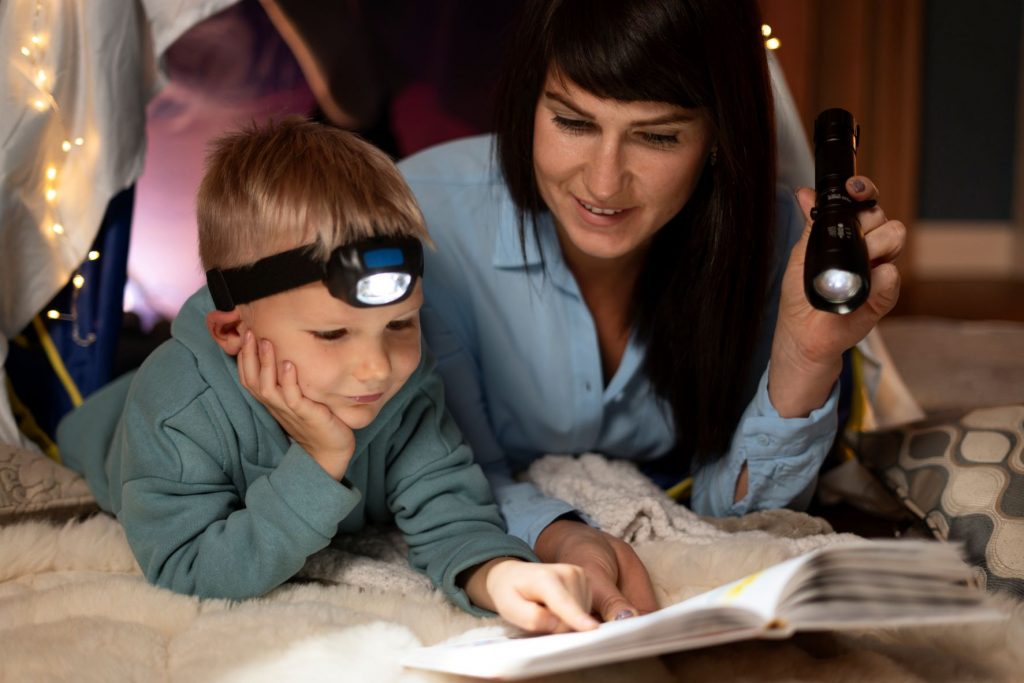
Schools across the nation are celebrating National Reading Month this March. At Lena Pope, we know reading is important for academic purposes and to build connection between caregivers and children. Here are some practical tips from two Lena Pope staff members on how to use reading to build both brains and relationships.
There are countless benefits when you read with and to children, and it does not require a large time commitment. Research has shown kids who read 20 minutes a day will be exposed to 1.8 million words in one year. Typically, these students go on to score in the 90th percentile on standardized tests. Reading five minutes a day will expose a child to 282,000 words in a year and typically leads to scores in the 50th percentile. The American Academy of Pediatrics recommends daily reading to children as young as six months because it strengthens their rapidly developing brains.
In addition to the benefits of pre-literacy skills, language, and vocabulary, reading fosters empathy and exposes kids to diverse cultures, ideas, and perspectives. Stories help children recognize and learn problem solving skills when they can see examples from their own lives played out in books.
A Guide for Tough Conversations
Tela Thornton, LCSW, Lena Pope family therapist who specializes in working with young children, shares reading aloud with your child can provide a space for connection and fosters secure attachment between a caregiver and child. Books also provide a guide for talking about difficult subjects.
“When a child is going through a challenging time, books can provide a way for the child to externalize their feelings. They can see themselves in characters from stories and this might lead them to self-reflect and process those feelings,” Tela shared.
You can use books on an array of topics as a starting point for hard conversations. “So often, we use over-complicated language or are intimidated by tough conversations. Books can be simple guidelines that use language kids can understand,” Tela said. “Stories present hard information in metaphor and can help kids digest it easier. Then parents and caregivers don’t have to feel like they must have all the right words – a book can do that for them.”

Letting Kids Choose And Ask Questions
Wendy Kyritz, one of Lena Pope’s Early Learning Centers Pre-K teachers, is a champion of reading in her classroom and witnesses its benefits daily. Wendy encourages parents and teachers to let kids choose their books (within age appropriateness) and support their choices in diverse types of reading materials. Different reading materials offer varying types of visual presentations that may spark their imagination and creativity in different ways.
Wendy also encourages caregivers to ask a child to read to you before they know how to read. “If it’s a book you have read often, you may be blown away by your child’s ability to recall the details of the story with accuracy. Having a child “read” to you based on pictures builds their ability to make connections and use context and imagination. What they come up with can be both inspiring and entertaining.”
Wendy also uses reading time with her students to gauge their interest in certain topics. During read aloud time, she often stops to answer questions, even those that don’t seem to directly relate to the story. “Children are constantly making connections from books to real life. When you follow their questions that may seem random to you, often you will be surprised at their train of thought and the connections they have made. By following their lead, you are reinforcing the connections they are building in their brains.”
Reading with a child seems like a simple thing, but there are easy steps you can take to make the most of this valuable time.
Tips for Reading Together:
- Sit close – Have your child sit in your lap or very close to you during reading time. Close physical contact reinforces secure attachments.
- Let kids choose – Let kids choose books that interest them. This gives children the chance to make choices, and choosing a book is a simple win for both caregiver and child.
- Answer questions – Stop and answer questions when they come up, even if they seem unrelated. Ask things like, “What made you ask that question?”
- Check for understanding – During reading, stop and ask your child if they know what a word means. We often assume children understand words adults see as common and mundane, but many times they don’t have a clear understanding of familiar words. This helps build their vocabulary in a casual way.
- Be descriptive – Point out pictures while you read and point to the words that correspond to those pictures. Offer additional descriptions of the pictures as you read.
- Create routine – Incorporate reading as part of your daily routine, especially as part of bedtime. Children thrive on predictability, so using reading to wind down from a long day can help reduce stress and promote healthy sleep habits.